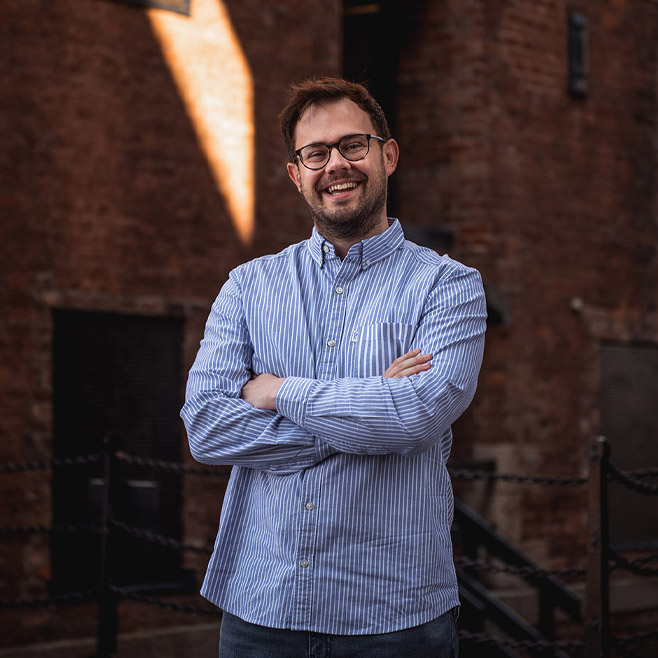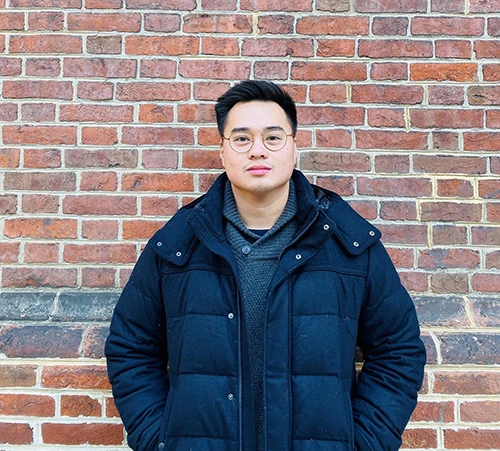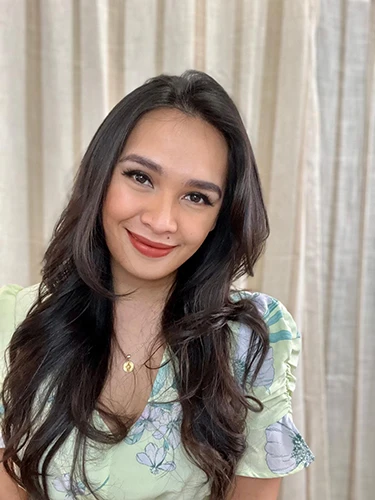Enscape Online Course | Complete Guide to Chaos Enscape
An all round 'complete guide' on everything needed to master Enscape for realistic imagery and video production. In 12 core lessons, plus 9 bonus videos, you'll learn how to perfectly light your scene, create stunning materials, how to populate your scene, the best render settings, post-production techniques and even learn about AI enhancements and video editing for short film production. This comprehensive course transforms your approach to real-time architectural visualization through Chaos Enscape's industry-leading platform.
- 7+ hours of premium content
- 21 step-by-step video lessons
- Future updates included
About this course
This course offers a comprehensive curriculum that systematically covers everything from fundamental principles to advanced techniques in Enscape, ensuring you gain thorough understanding of the software's complete capabilities. Whether you're a beginner or have some experience, you'll find valuable insights and tips to enhance your skills while developing professional workflows that scale with project complexity. Led by seasoned professionals, the course provides hands-on tutorials and real-world examples that mirror actual project challenges, ensuring immediate applicability to your professional practice.
This comprehensive Enscape course transforms your approach to real-time architectural visualization through systematic exploration of one of the industry's most intuitive and powerful rendering platforms. You'll master Enscape's seamless integration with design software, learning to create photorealistic imagery and immersive walkthroughs that communicate spatial quality with unprecedented immediacy and visual impact.
The curriculum emphasizes practical application through contemporary residential architecture, teaching you to leverage Enscape's extensive asset library, advanced material systems, and sophisticated lighting workflows. You'll develop expertise in scene staging, atmospheric effects, and VR integration that creates compelling architectural presentations suitable for diverse client communication needs and project delivery requirements.
Advanced techniques include AI enhancement workflows, video editing integration with Adobe After Effects, and professional export strategies that optimize presentations across digital and print platforms. The course covers both technical rendering knowledge and creative storytelling approaches that elevate architectural communication beyond basic visualization to engaging narrative experiences.
These real-time rendering skills are essential for contemporary architectural practice where immediate visual feedback and rapid iteration capabilities can accelerate design development while improving client satisfaction. The techniques learned apply directly to design communication, planning submissions, and marketing materials where compelling visual quality and presentation efficiency distinguish successful architectural practice.
What will you learn?
Loading lesson previews...
This course will turn you into:
A real-time rendering specialist
Master Enscape's live rendering capabilities to create instant, high-quality visualizations that streamline design communication and client presentations.
A virtual experience creator
Learn to craft immersive architectural walkthroughs and virtual reality experiences that allow clients to truly experience spaces before they're built.
An efficient visualization artist
Develop workflows that integrate seamlessly with your design process, enabling rapid iteration and immediate visual feedback throughout the design development phase.
Syllabus
In the first comprehensive lesson, you'll be systematically introduced to Enscape, a powerful real-time rendering and VR plugin for leading design software including SketchUp and Revit. You'll learn about Enscape's remarkable ease of use, exceptionally quick render times, and high-quality output capabilities, with focused exploration of its seamless integration with modeling software that revolutionizes architectural visualization workflows and accelerates design communication processes.
The sophisticated building model we are utilizing was strategically inspired by Strom Architects, renowned for their exceptional high-end residential projects that demonstrate architectural excellence. We recommend studying top CGI firms including MIR, Uniform, and Strive CGI for professional inspiration and quality benchmarks. These industry-leading firms consistently produce highly detailed and photorealistic images, maintaining meticulous attention to reflections, material authenticity, and overall photographic quality that defines professional architectural visualization standards.
First, we systematically ensure all elements of our architectural model, including furniture, fixtures, and detailed components, are properly visible and organized for optimal rendering results. I prefer creating views directly within Enscape rather than relying solely on SketchUp scenes, as synchronizing views between the two applications can be inconsistent, particularly when working with complex two-point perspective compositions that require precise camera control and consistent framing.
We systematically begin with the streamlined method of adding sophisticated material attributes by strategically typing descriptive keywords such as "steel" or "grass" at the end of material names for rapid workflow optimization. While this method provides quick results, it offers limited control, so we advance to utilizing Enscape's comprehensive material editor for precise control over surface properties, reflectance characteristics, and material behavior that ensures photorealistic results in final renderings.
We systematically begin by sourcing high-quality tile textures from Poliigon to strategically replace existing floor materials, specifically targeting a sophisticated marble or travertine aesthetic that enhances the overall design quality. After carefully downloading and meticulously tweaking textures in Photoshop for optimal integration, we proceed to systematically utilize Quixel Bridge to source appropriate concrete textures that maintain material authenticity and photorealistic quality throughout the architectural visualization process.
For comprehensive interior staging, we systematically replace generic architectural components with meticulously detailed assets from Enscape's extensive library, including realistic books, kitchen accessories, and sophisticated furniture that enhance spatial authenticity. This meticulous process involves carefully selecting and strategically placing items to create compelling, realistic scenes that communicate lived-in architectural experiences and enhance viewer engagement with the spatial narrative.
Here, we systematically focus on finalizing comprehensive asset replacements and strategic additions using high-quality external sources that extend beyond Enscape's standard asset library for enhanced realism. The primary tasks include replacing the sofa, area rug, and vehicle with more sophisticated alternatives to dramatically enhance realism and visual impact in our architectural scenes while maintaining consistency with the overall design aesthetic and spatial narrative.
We systematically begin by critically assessing our current renders, methodically comparing them to real-life precedents, and strategically identifying specific areas requiring improvement, including stone wall texture authenticity, timber slat detailing, concrete color accuracy, and aluminium framing precision. This rigorous analysis ensures our visualization work meets professional standards while maintaining design integrity and material authenticity throughout the development process.
We systematically begin by comparing our updated images to earlier versions, carefully noting significant improvements in texture quality and lighting authenticity that enhance overall visual impact. The timber cladding and concrete floor demonstrate marked improvement in material representation, while the stone wall appears considerably more realistic and convincing, approaching photographic quality that distinguishes professional architectural visualization work.
We systematically begin by comparing current renders to earlier versions, noting significant improvements particularly with timber cladding authenticity and stone wall texture quality that enhance overall presentation impact. Visual settings are crucial for maintaining consistent rendering quality across project phases. We strategically create comprehensive presets for both exterior and interior scenes that ensure workflow efficiency and consistent visual quality throughout project development and final delivery.
In Lesson 11, we systematically focus on creating compelling videos and sophisticated animations using Enscape's powerful capabilities. We'll strategically animate camera movements, environmental elements including trees, and sun path sequences to generate engaging videos that communicate architectural design intent. Initially, ensure your scene is comprehensively refined, systematically addressing any gaps or visual inconsistencies that could detract from the final animation quality.
Finally, we systematically create professional videos from our rendered clips using Adobe After Effects for polished post-production workflows. First, create a new composition with HD resolution of 1920×1080, a smooth frame rate of 60 fps, and an appropriate duration of 36 seconds that accommodates comprehensive architectural storytelling while maintaining viewer engagement throughout the presentation sequence.
In Bonus Lesson 1, we systematically explore Enscape's powerful feature to export projects as executable (EXE) files or web standalone files, strategically allowing clients to navigate architectural models independently without requiring Enscape installation. This capability revolutionizes client engagement and presentation delivery, enabling immersive architectural experiences that enhance project understanding and stakeholder satisfaction.
In the second bonus lesson, we systematically learn to manage computationally heavy models that potentially slow down your project performance and workflow efficiency. The focus centers on the highly detailed car model in the driveway that demonstrates optimization techniques. After strategically tweaking the car's material properties, you can significantly reduce computational load by copying the car to a new SketchUp window and saving it as a separate linked component.
In bonus lesson three, we systematically delve into the sophisticated art of creating soft environment lighting to dramatically elevate the realism of your 3D architectural scenes. Discover the transformative power of overcast HDRI skies and learn comprehensive techniques to strategically tweak visual settings for achieving perfectly diffused light effects that enhance spatial quality and material authenticity throughout your architectural presentations.
Here, we systematically explore creating highly realistic spotlights using IES files, which contain precise data on how specific light fixtures emit illumination, accurately capturing the nuances and optical distortions created by lenses and glass components. This advanced technique enables photorealistic lighting that mimics real-world fixtures and enhances the authenticity of interior and exterior lighting scenarios.
We systematically tackle the surprisingly intricate task of creating realistic area rugs in Enscape, a common challenge that offers several effective solutions for achieving convincing results. First, we systematically explore using high-quality textures and normal maps to transform a flat rug geometry into a realistic appearance that demonstrates proper material behavior and visual authenticity within architectural interior spaces.
We systematically explore the fascinating world of video textures, focusing specifically on how to strategically add dynamic footage to television screens within your Enscape architectural models. This sophisticated technique is incredibly versatile and can be creatively adapted for various visual effects that enhance the lived-in quality and contemporary relevance of architectural interior spaces.
We systematically delve into creating sophisticated translucent materials, primarily focusing on window treatments including curtains, but the techniques are equally applicable to lampshades and frosted glass elements. The key technique involves strategically using the foliage material type within Enscape to achieve convincing translucent effects that allow light transmission while maintaining visual interest and material authenticity.
Finally, with all additional advanced tips systematically implemented, we comprehensively test the architectural scene using virtual reality headset technology for immersive exploration. You'll learn how to navigate your architectural space in VR and effectively showcase it to your audience for the ultimate immersive experience that revolutionizes client engagement and spatial understanding.
Learn how to systematically test the energy efficiency and carbon footprint of your architectural project with Enscape Impact's integrated analysis tools. In this lesson, we strategically make design modifications to the scheme in an effort to reduce its environmental impact and energy consumption. This is a brand-new add-on designed to seamlessly integrate real-time rendering capabilities with comprehensive building performance metrics for sustainable design evaluation.

Meet your instructor
Adam Morgan
Architectural Director
ThreeForm Architects
Hi, I'm Adam. I am the founder and director of ThreeForm Architects, a team of architects and artists in Liverpool, UK. The office is experienced in a wide range of building types and procurement routes, successfully winning projects with contract values of up to £20 million. We work for a broad spectrum of public and private sector clients across the country.
What our members are saying





Frequently Asked Questions
ArchAdemia Support
How can we help?